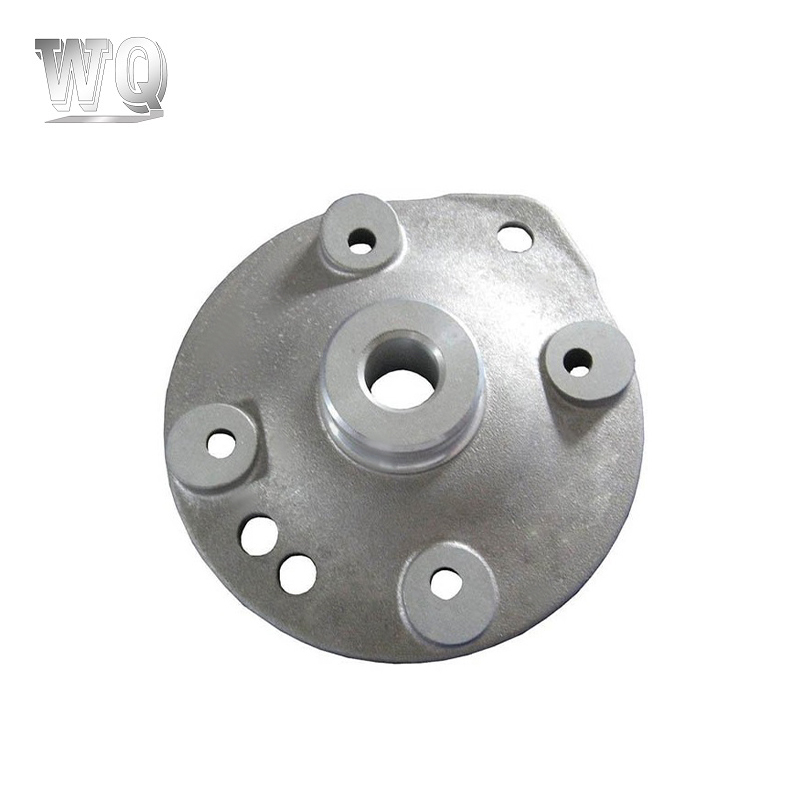Aluminum alloy castings are widely used in the automotive, aerospace, electronic equipment and construction fields due to their light weight, high strength and good thermal conductivity. However, there are significant differences in the performance requirements of aluminum alloy castings in different application scenarios. The following is an analysis of the specific performance requirements of aluminum alloy castings in various applications:
Automotive industry
Performance requirements: The automotive industry's demand for aluminum alloy castings is mainly focused on weight reduction, corrosion resistance and mechanical strength.
Applicability optimization:
Lightweight design: Improve specific strength (ratio of strength to density) to reduce the weight of the vehicle and improve fuel efficiency.
Corrosion resistance: Aluminum alloy castings must have good corrosion resistance, especially in components such as engine blocks and gearbox housings.
Mechanical properties: Ensure that the castings can still maintain sufficient strength and toughness under high temperature and dynamic load conditions.
Surface treatment: Enhance wear resistance and aesthetics through anodizing or coating technology.
Aerospace field
Performance requirements: The aerospace field has extremely demanding requirements for aluminum alloy castings, including high strength, low density, excellent heat resistance and fatigue resistance.
Applicability optimization:
High strength-low density: Use high-performance aluminum alloys (such as 7075 or 2024 series) to reduce weight while ensuring strength.
High temperature resistance: Develop aluminum alloy materials that can work in extreme temperature environments, such as for engine components or fuselage structures.
Fatigue resistance: Improve the fatigue limit of the material, extend the service life, and meet long-term flight requirements.
Precision machining: Ensure the dimensional accuracy and surface finish of the castings to meet complex assembly requirements.
Electronic equipment field
Performance requirements: Aluminum alloy castings in electronic equipment are mainly used for radiators, housings and frames, and need to have good thermal conductivity, electromagnetic shielding capabilities and appearance quality.
Applicability optimization:

Thermal conductivity: Select aluminum alloy materials with high thermal conductivity to ensure efficient heat dissipation.
Electromagnetic shielding: Enhance the shielding effect of electromagnetic interference by optimizing the casting structure or surface treatment.
Appearance quality: Provide a high-finish surface to facilitate subsequent spraying or anodizing treatment to improve the aesthetics of the product.
Miniaturized design: Meet the demand for thinness and compactness of consumer electronic products.
Architecture and decoration field
Performance requirements: Aluminum alloy castings in the construction and decoration fields are mainly used for door and window frames, curtain walls and interior decoration parts, emphasizing weather resistance, aesthetics and easy processing.
Applicability optimization:
Weather resistance: Improve the UV resistance and salt spray corrosion resistance of castings to ensure long-term use without fading or deformation.
Appearance diversity: Rich color and texture effects are achieved through dyeing, electrophoretic coating or wood grain transfer.
Environmental protection: Use non-toxic and harmless coatings and adhesives to reduce the impact on indoor air quality.
Easy to install: Design standardized interfaces and modular structures for quick installation and maintenance.
Industrial machinery field
Performance requirements: Aluminum alloy castings in industrial machinery are mainly used to manufacture pump bodies, valve bodies and transmission parts, and need to have good wear resistance, pressure resistance and stability.
Applicability optimization:
Wear resistance: Add hard particles or use surface hardening treatment at key parts to improve wear resistance.
Pressure resistance: Optimize the wall thickness and rib layout of the casting to ensure that there is no deformation or leakage under high pressure conditions.
Stability: Control the porosity and shrinkage defects during the casting process to avoid the risk of failure caused by internal defects.
Cost control: Simplify the structural design to reduce manufacturing costs while meeting performance requirements.
Sports equipment field
Performance requirements: Aluminum alloy castings in sports equipment (such as bicycle frames and golf club heads) need to take into account lightweight, high strength and comfort.
Applicability optimization:
Weight reduction design: Use high-strength aluminum alloy materials to minimize weight while ensuring strength.
Shock absorption performance: Optimize the casting structure to absorb impact force and reduce vibration transmission to enhance the user experience.
Surface treatment: Polish or sandblast to obtain a smooth surface to improve touch and visual effects.
Shipbuilding and marine engineering field
Performance requirements: Shipbuilding and marine engineering equipment work in a humid salt spray environment, and aluminum alloy castings need to have excellent corrosion resistance and seawater erosion resistance.
Applicability optimization:
Corrosion resistance: Use aluminum alloy materials containing zinc or magnesium, and cooperate with anodizing or plating protection to enhance corrosion resistance.
Waterproof sealing: Design sealing joints and waterproof structures to prevent moisture from penetrating and affecting the life of castings.
Vibration resistance: Add shock absorbers or flexible connection sections to reduce the impact of hull vibration on castings.
The performance requirements of aluminum alloy castings in different application scenarios vary significantly. Manufacturers need to adjust material formulations, structural design and manufacturing processes according to specific needs to ensure the applicability and reliability of products.









